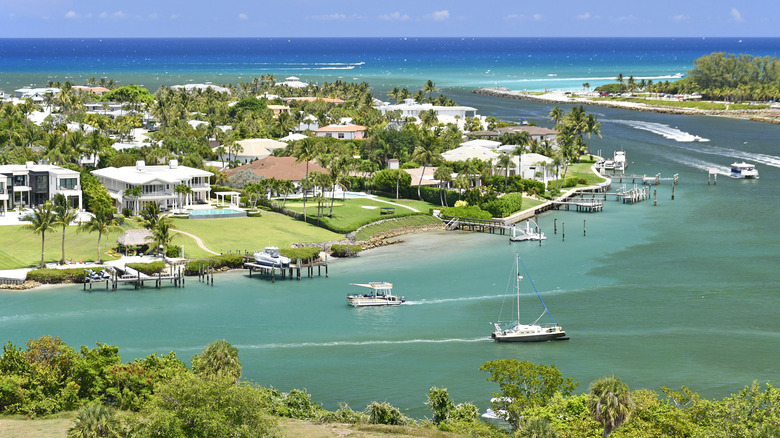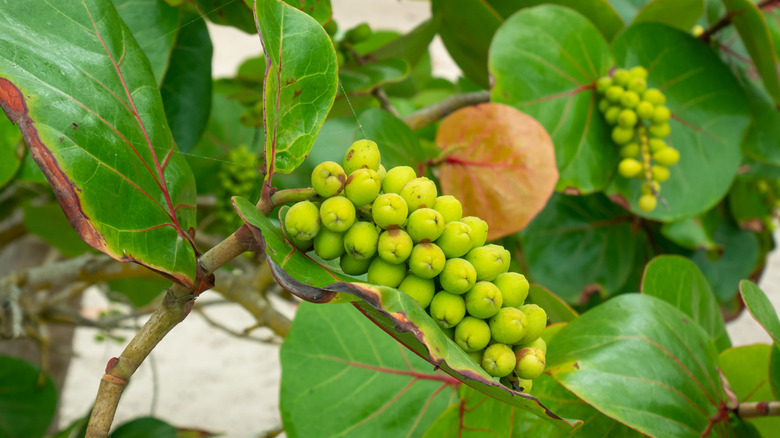The Low-Maintenance Fruit-Bearing Tree That's Perfect For Coastal Landscapes
Let's be honest: Growing and maintaining thriving trees and landscaping isn't always a breeze when you live in a coastal area. Coastal climates can be especially hard for tree growth due to several factors: Dry, sandy soil is often low in nutrients; potential for high waves; and the tendency for higher winds containing salt, which more easily dries out trees. But the sea grape (Coccoloba uvifera) can be a great low-maintenance tree for landscapes in these regions, while also offering privacy and a fruit that isn't technically a grape, but is still edible.
"It is grown in full sun to partial shade and is drought, wind, and salt tolerant — perfect for the coastal environment," Stephen McFarlane, regional landscape manager for Sandals Resorts International, told Southern Living. Native to central and southern Florida coastal regions, the sea grape can be grown as a shrub or tree, with the potential to be 35 to 50 feet high and 20 to 30 feet across, depending on how you train it. "Prune for size and shape as needed, or leave it untrimmed to create a natural form," McFarlane said.
Looks-wise, the sea grape is an attractive plant, with evergreen, leathery, red-veined leaves. Its blooms are white flowers before transforming into clusters that will bear fruit that begins green, and turns darker purple with age. However, it is important to note that only female trees bear fruit, so make sure you have one of each if you want the full benefit, and added property value, of the tree.
How to grow and maintain sea grape trees and take advantage of their fruit
The sea grape's Ideal growing conditions are in the U.S. Hardiness Zone 10A through 11. It is sensitive to frost and freeze and may or may not thrive as far north as zone 9A. They should be planted in spring or fall; anchored in sandy soil and full sun; and should be heavily watered until they are established.
Not only are they a hardy choice for the coastal region, they are also a tree that helps reduce soil erosion and assists various animals. Sea grapes trap sand in leaves, limbs, and stalks, helping preserve the sandy shorelines. In addition, sea grapes provide munchies for native animal species, and help nesting sea turtles and their babies thrive by impeding bright artificial light sources. Sea grapes are so important to Florida beaches, for example, that trees present in the dune environment there require a permit to alter, or even trim the trees.
This tree also produces actual edible fruit for people, too. Sometimes compared to apples, sea grapes — which contain a large seed in the middle — can be eaten off the tree, and taste a little bit sweet and sour. Many folks use them to make jelly or jam, but creating vinegar or wine is also an option. If you're looking for a great tree that thrives in coastal areas, helps the environment, and even offers a tasty snack, the sea grape is a wonderful option to consider.

